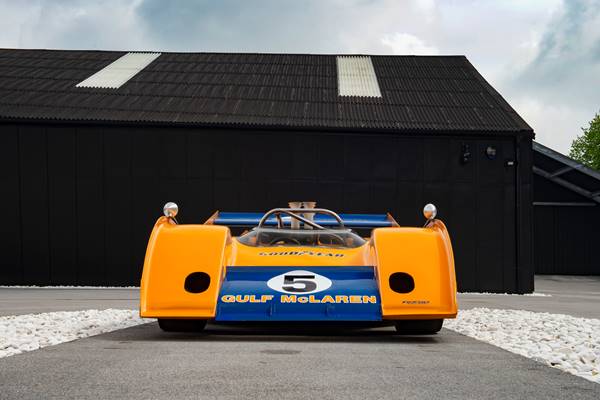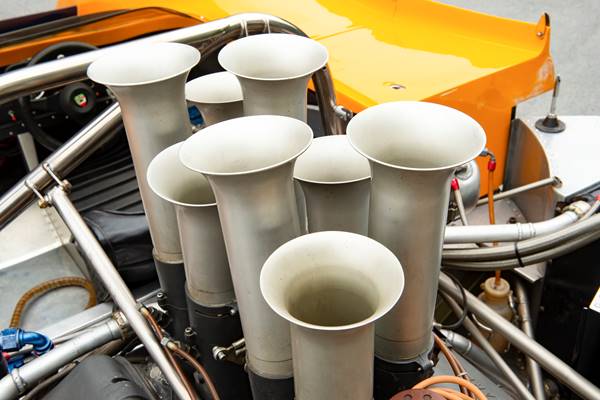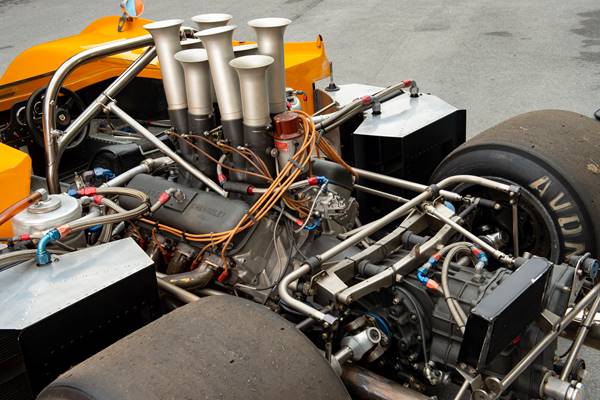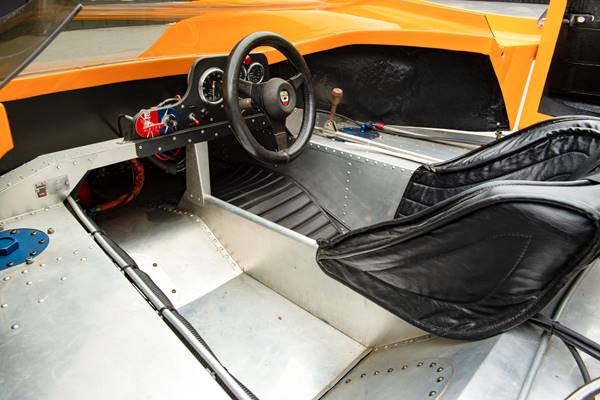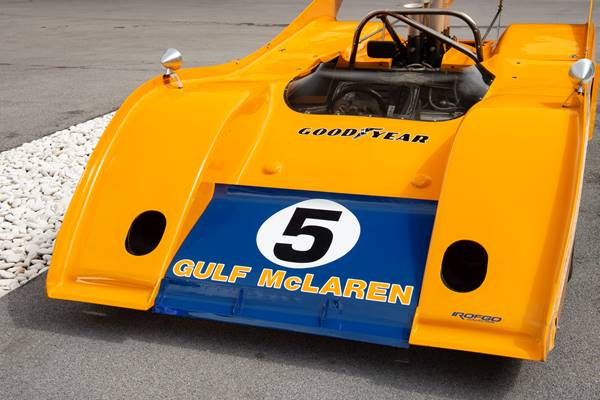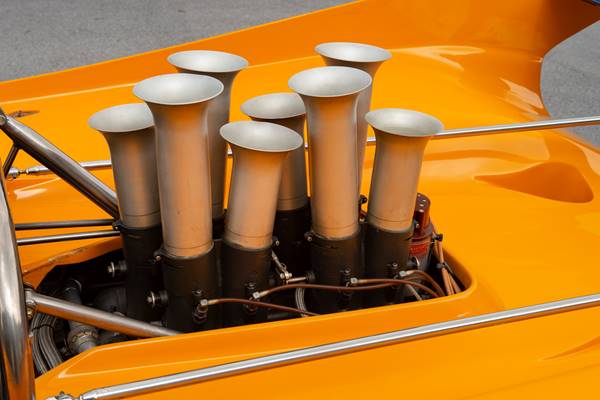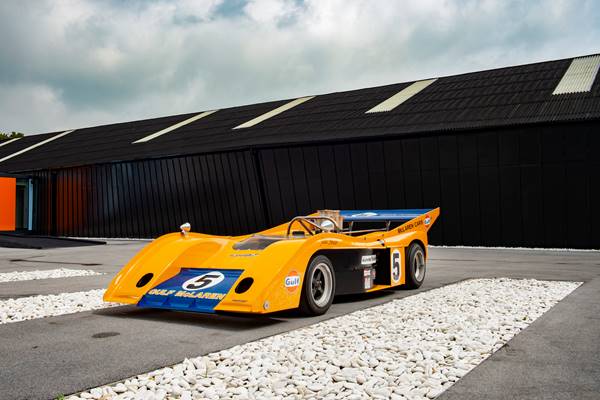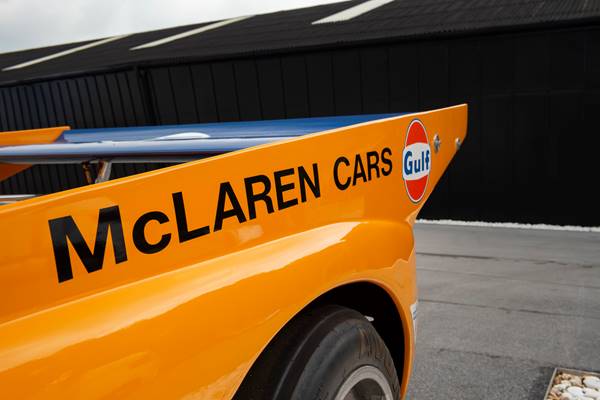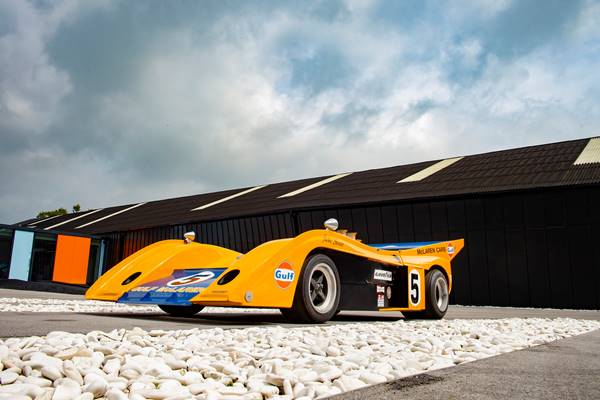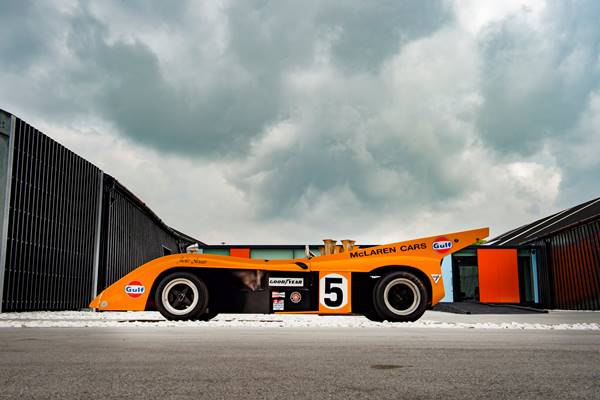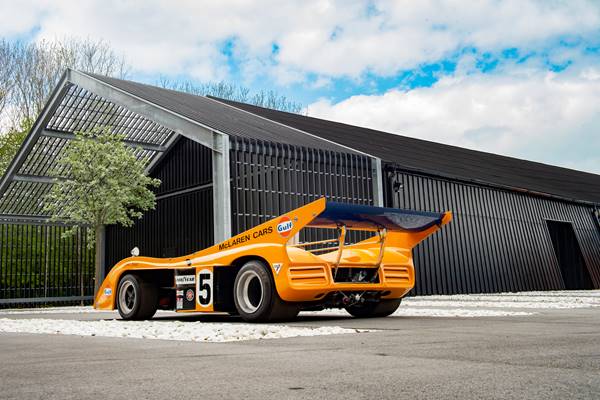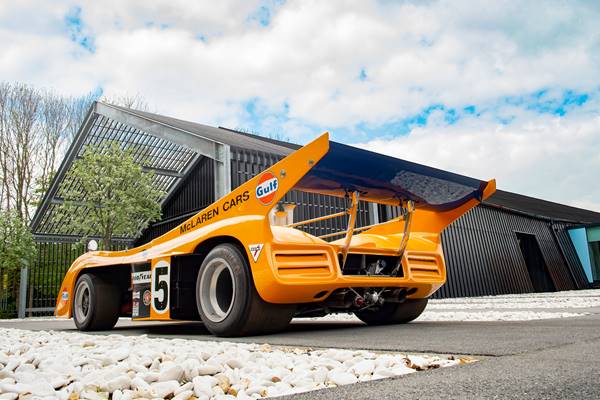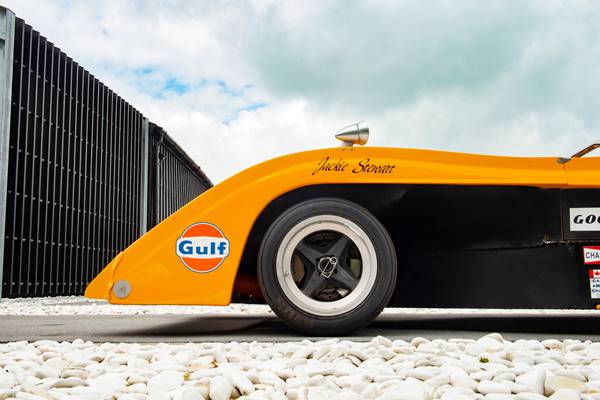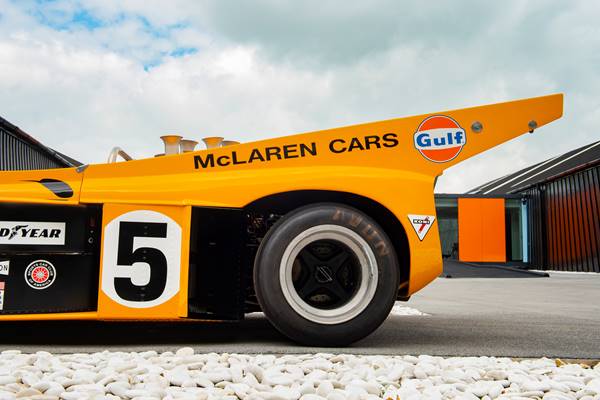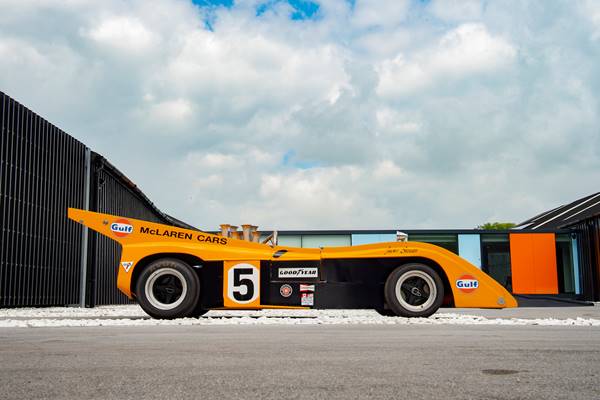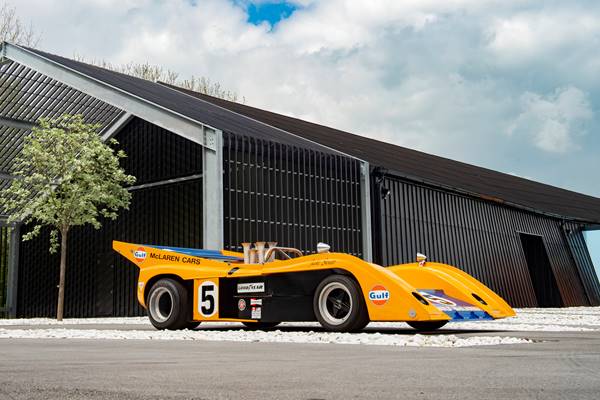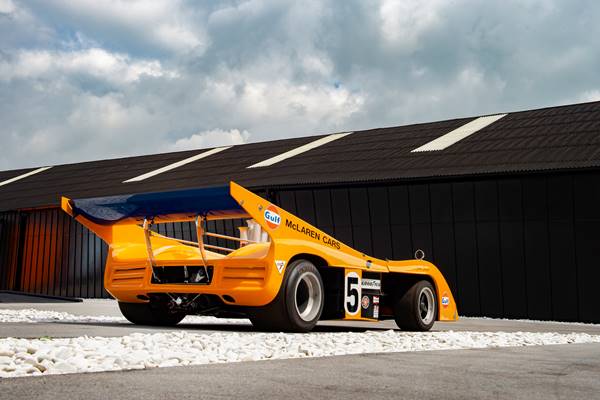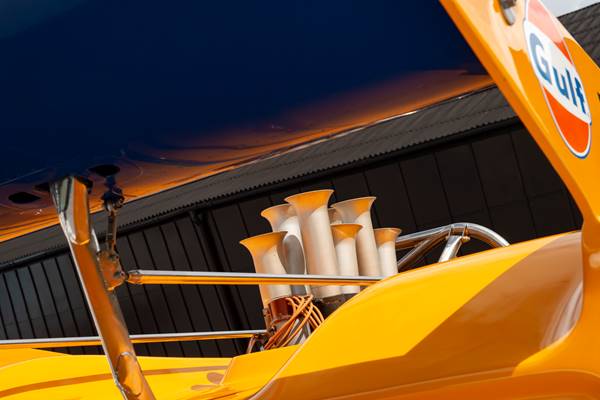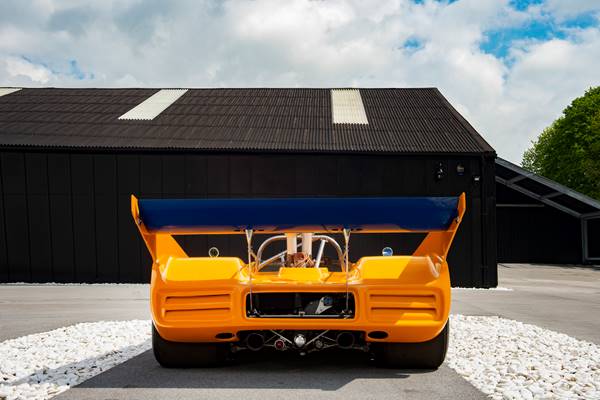After five years of Can-Am domination, McLaren knew that 1972 would be different. Roger Penske had announced that he was returning to Can-Am with a twin-turbocharged 900 bhp Porsche 917/10k and a $2 million budget, four times that of McLaren. McLaren responded with the new M20, lighter and better handling than the M8 range with hip radiators allowing an aerofoil to be built into the nose. A turbo engine project was started but did not reach friction so the M20s were fitted with normally-aspirated ‘little’ 494 ci (8.1-litre) Chevrolet V8s generating 750 bhp.
Team leader Denny Hulme started the season with M20/2 but crashed it at Road Atlanta. The prototype M20 was race prepared with typical McLaren efficiency and given the chassis number M20/3. The Bear raced it at Watkins Glen in June and claimed pole with the banzai lap over two second faster than the F1 cars had managed the previous October. He got away in front and stayed there; his 22nd Can-Am victory and McLaren’s 39th. Nobody guessed those would be their final totals. After Mark Donohue won at Mid-Ohio in the Penske Porsche, the next race at Road America witnessed a great fight between Hulme and George Follmer in the second Penske Porsche, only interrupted by Hulme’s engine failing. Another engine failure at Donnybrook led McLaren to detune their engines for Edmonton and Hulme ironically led - until Donohue slipped past to lead him home. At Laguna Seca Folmer won, smooth as silk and apparently unflustered, while Hulme rang everything from the M20 trying to keep up. With a race to spare, the title was lost.
A stocked 9-litre Chevy was tried in M20/3 for practice at Riverside at the end of the session with a reported 800 bhp and Hulme did everything he could to take pole but was still 0.3s behind the Porsche. It would be the last act of McLaren’s Can-Am history. Hulme’s engine broke again in the race and McLaren pulled out of Can-Am to focus on F1. Porsche were left to dominate but they took no great satisfaction from it and two years later Can-Am was dead.
At the same time that McLaren left Can-Am, so did M20/3. Helmut Fielder’s Fielder Racing Team acquired the car after its last race at Riverside and took it to Germany for Helmut Kelleners to drive in the European Interserie Championship. The car largely kept its Gulf-McLaren livery but added support from Weisberg Werkzeuge.
Fielder experimented with a 7.5-litre turbocharged Chevrolet V8 built by Moteurs Morand in Switzerland. The engine had originally been intended for the VDS team and was reputed to generate 930 bhp but only for the short time that it held together. When the engine exploded immediately after the start of the Norisring race, it was the team’s fifth engine failure in four races. The experiment was abandoned and so, for a while, was the car as Kelleners took over a Porsche 917-20 with which Vic Elford had dominated the Hockenheim race.
The McLaren was rebuilt in 1974 back to its original 8.1-litre engine and was perfectly reliable that season. After finishing third in the opening round, Kelleners won the Nürburgring 300km in June to take the lead in the championship. Herbert Müller’s Martini Racing Porsche 917-20 won the next three races but Kelleners was never far behind and went into the final race as Müller’s only challenger for the title. Muller elected to skip this event to race the Porsche 911 Carrera RSR Turbo in the Brands Hatch 1000 km instead so Kelleners knew he would win the title if he won the race. But Martini Racing weren’t going to let it go without a fight and invited 1973 interserie champion Leo Kinnunen to interrupt his fledgeling F1 career to drive their 917/20. The Finn duly set fastest lap on his way to dominate victory.
